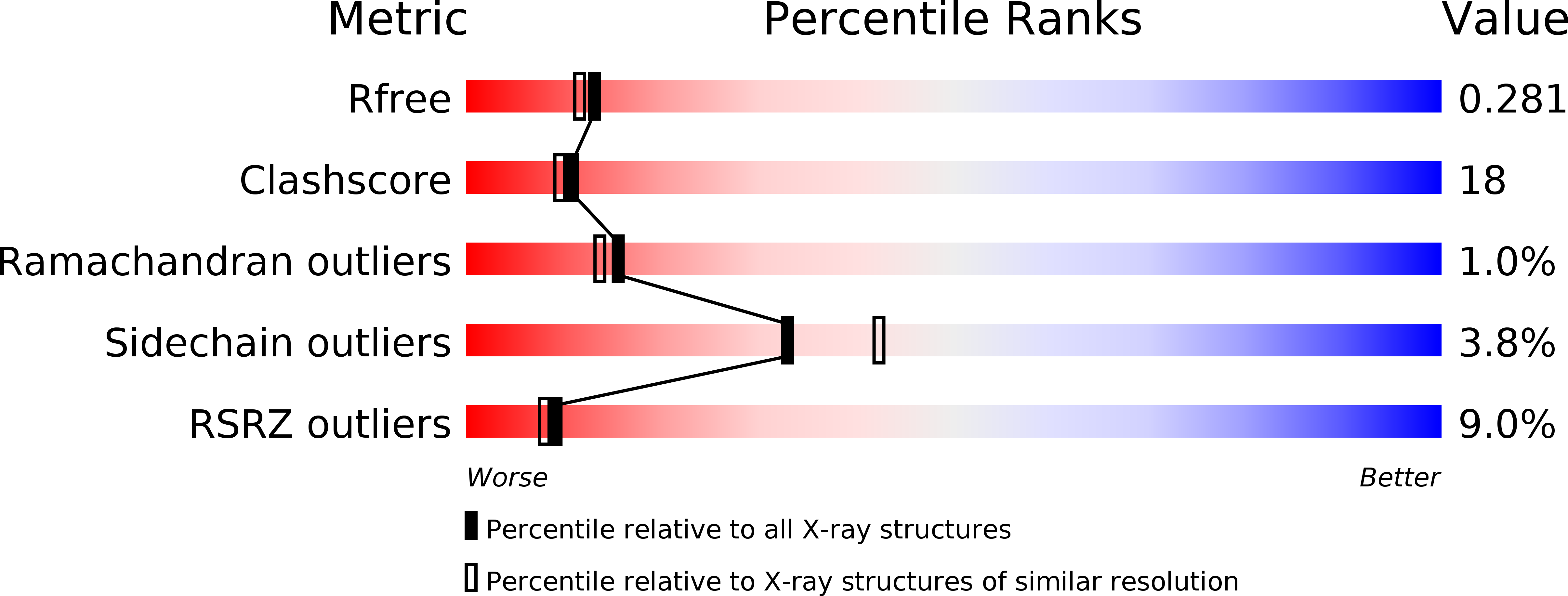
Deposition Date
2010-11-24
Release Date
2011-02-02
Last Version Date
2024-10-16
Entry Detail
PDB ID:
3AR6
Keywords:
Title:
Calcium pump crystal structure with bound TNP-ADP and TG in the absence of calcium
Biological Source:
Source Organism:
Oryctolagus cuniculus (Taxon ID: 9986)
Method Details:
Experimental Method:
Resolution:
2.20 Å
R-Value Free:
0.28
R-Value Work:
0.25
R-Value Observed:
0.25
Space Group:
P 41 21 2


